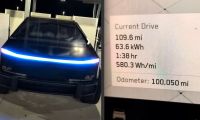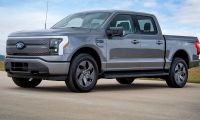NHTSA has decided not to open an investigation into Tesla because the regulator concluded that Tesla's unexpected acceleration problem is caused by user error. The manufacturer thus avoids a risk of massive recall of vehicles.
After reviewing data from Tesla, the ODI and the NHTSA failed to find any evidence that would support a probe into Tesla that would support sudden acceleration claims.
The NHTSA wrote:
“After reviewing the available data, ODI has not identified evidence that would support opening a defect investigation into SUA in the subject vehicles. In every instance in which event data was available for review by ODI, the evidence shows that SUA crashes in the complaints cited by the petitioner have been caused by pedal misapplication. There is no evidence of any fault in the accelerator pedal assemblies, motor control systems, or brake systems that has contributed to any of the cited incidents. There is no evidence of a design factor contributing to increased likelihood of pedal misapplication. The theory provided of a potential electronic cause of SUA in the subject vehicles is based upon inaccurate assumptions about system design and log data.”
Since 2018, the American agency has received and examined a total of 246 complaints, 203 of which follow from any accident. At the heart of the problem, a phenomenon of sudden sudden acceleration. The investigation office concluded that there were no faults on the vehicle and that the problem was "improper use of the pedal"
This decision will consolidate Tesla in its position. In a first petition, the builder denied the existence of a problem and qualified the petition as an attempt to recover money following the misadventures of a few owners. A little later, Tesla published: "We are investigating every incident reported by drivers in the event of an unexpected acceleration, and in each case, the data collected shows that the vehicle behaved as expected."
Tesla had already anticipated, in the design of the cars, safety measures to avoid potential acceleration problems. In fact, the pedal has two different position sensors and if the system detects the slightest anomaly, the engine will shut off automatically. This means concretely that to have a sudden acceleration unwanted by the driver, the 2 sensors must be faulty, in the same way and at the same time.
While the initiator of the petition had asked NHTSA to recall the Model S, X and 3 at the slightest problem, the agency concludes: “There is no evidence of a defect in the assembly of the accelerator pedal, the engine control system or the braking system which could be the source of the incidents ”.
A big relief for Tesla, right after the Model Y was released in China, even though the company seemed genuinely confident about the outcome.
Armen Hareyan is the founder and the Editor in Chief of Torque News. He founded TorqueNews.com in 2010, which since then has been publishing expert news and analysis about the automotive industry. He can be reached at Torque News Twitter, Facebok, Linkedin and Youtube.






